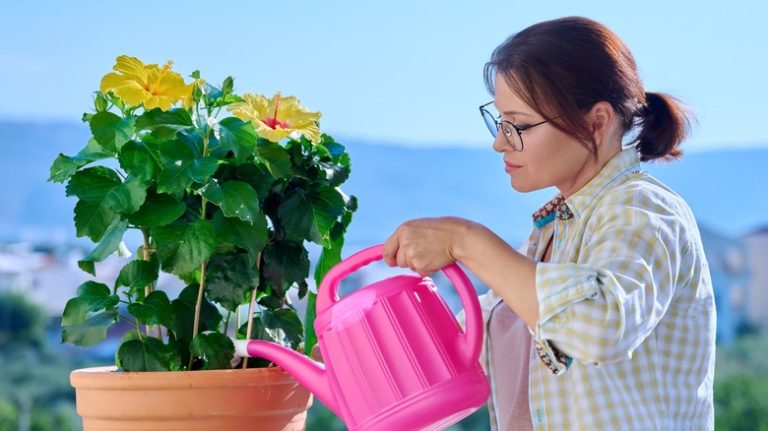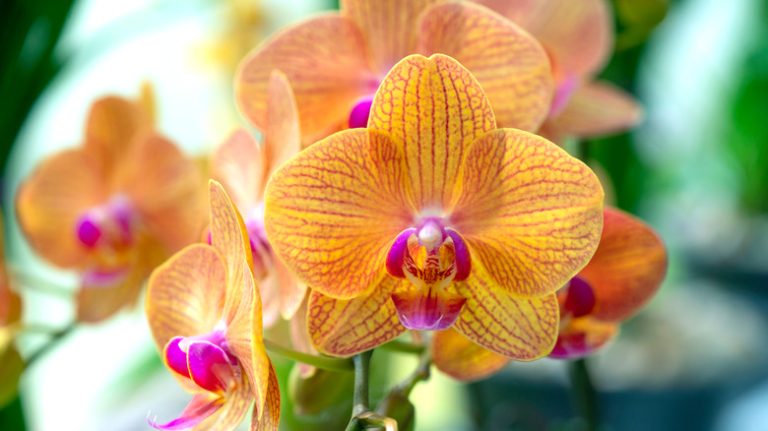Petunias are one of the most popular types of flowers used in gardens and landscapes all around the world. With their vibrant colors and hardy nature, they are a favorite among both beginner and experienced gardeners. Petunias come in a wide variety of shapes, sizes, and colors, making them versatile plants that can be used in many different ways.
There are several different types of petunias, each with its own unique characteristics. The most common types of petunias are grandifloras, multifloras, and millifloras. Grandifloras are known for their large, showy flowers that can reach up to 5-10 inches in size. They come in a wide range of colors, from vibrant pinks and purples to soft pastels and even white. Multifloras are smaller and more compact than grandifloras, but they produce a greater number of flowers. They are also more tolerant of drought and shade, making them a popular choice for gardeners with less-than-ideal growing conditions. Millifloras, on the other hand, are the smallest of the petunia varieties, with flowers that are less than an inch across. Despite their small size, they are prolific bloomers and come in a wide variety of colors.
In addition to grandifloras, multifloras, and millifloras, there are also other types of petunias that offer unique characteristics. Avalanche petunias, for example, have a spreading habit and are great for use as groundcovers. Supertunia® petunias are known for their vigorous growth and ability to withstand heat and drought. Crazytunia petunias come in a wide variety of colors, with each flower having a unique pattern. Wave® petunias are known for their ability to spread and fill in large areas, making them a popular choice for hanging baskets and containers.
When it comes to care, petunias are generally easy to grow and require minimal maintenance. They prefer well-drained soil and should be watered regularly, especially during hot, dry weather. Deadheading, or removing spent flowers, will encourage continued blooming. Petunias are also heavy feeders and should be fertilized regularly with a balanced fertilizer. They are also attractive to pollinators, making them a great choice for gardeners looking to attract bees and butterflies to their gardens.
Whether you prefer the showy blooms of grandifloras, the compact size of multifloras, or the delicate flowers of millifloras, there is a petunia variety for everyone. Their wide range of colors, shapes, and sizes make them a versatile plant that can be used in many different ways. Whether planted in beds, borders, hanging baskets, or containers, petunias are sure to add beauty and color to any garden or landscape.
Types of Petunias
There are many different types of petunias available to plant in your garden. Here are some popular varieties:
- Prism: This petunia has stunning bi-colored flowers that resemble a prism with its mix of purple and white.
- Black: As its name suggests, this petunia has deep black flowers and is perfect for adding a touch of drama to your garden.
- ‘Supertunia Edge Purple’: This is a well-known cascading petunia that is easy to grow and produces beautiful purple flowers with slightly fringed edges.
- Cascadia: These petunias are known for their trailing habit, making them a great choice for hanging baskets or containers. They come in a variety of colors.
- Millifloras: These petunias have smaller flowers, but they make up for it with their abundance. They are generally low-growing and are great for ground cover.
- Picobella: Picobella petunias are compact and spreading, making them perfect for containers or borders. They come in a variety of colors.
- Shock Wave: This petunia variety is known for its vigorous spreading habit and its ability to withstand drought. It produces an abundance of flowers in various colors.
- Wave: Wave petunias are a favorite amongst gardeners for their ease of care and their ability to withstand rainy weather. They come in a wide variety of colors and have a spreading habit.
- Grandiflora: These petunias have large, showy flowers and are known for their high-impact color. They come in a wide range of colors.
- Floribundas: Floribunda petunias produce clusters of smaller flowers on compact plants. They are great for borders or containers.
- Ground Cover: These petunias are low-growing and spread quickly, making them great for covering large areas of ground. They come in a variety of colors.
- Fantasy: Fantasy petunias are known for their unique and vibrant colors. They are sure to add a pop of color to any garden.
- Grandiflora Ray: Grandiflora Ray petunias have large, vibrant flowers with striking patterns. They are sure to make a statement in your garden.
- Yellow: Yellow petunias are a bright and cheerful addition to any garden. They add a splash of sunshine to your flower beds.
- White: White petunias are classic and elegant. They are perfect for creating a clean and fresh look in your garden.
- Potunia: Potunias are a new type of petunia that are perfect for containers. They are compact and produce an abundance of flowers.
- Sweetunia: Sweetunias are known for their sweet fragrance. They come in a variety of colors and are great for attracting pollinators.
These are just a few of the many different types of petunias available. Choose the ones that suit your preferences and enjoy the beauty they bring to your garden.
Different Types of Petunia Plants
Petunias are beautiful flowering plants that come in a variety of colors, sizes, and types. Whether you choose the grandiflora, multiflora, or milliflora, there is a petunia variety that will suit your garden or window box perfectly.
- Grandiflora Petunias: These petunias have large flowers, typically about 4 to 5 inches across. They come in a wide range of colors, and their velvety texture adds a touch of elegance to any garden.
- Multiflora Petunias: Multiflora petunias tend to have slightly smaller flowers than grandifloras, about 2 to 3 inches across. They are known for their abundant flowering and come in a wide variety of colors.
- Milliflora Petunias: Milliflora petunias have the smallest flowers, typically about 1 inch across. Despite their small size, they are prolific bloomers and are perfect for hanging baskets or containers.
Amongst these types, there are also specific petunia series that offer unique characteristics:
- ‘Supertunia’ Petunias: Supertunia petunias are known for their spreading habit and heat tolerance. They can grow up to 2 feet wide and 1 foot tall, making them a great choice for groundcovers or hanging baskets.
- ‘Sweetunia’ Petunias: Sweetunia petunias are a variety that tend to have fringed or ruffled petals, giving them a unique and eye-catching appearance.
- ‘Potunia’ Petunias: Potunia petunias are proven pollinators and are known for their excellent flowering performance. They come in a wide range of colors and are perfect for containers or in the front of flower beds.
- ‘Crazytunia’ Petunias: Crazytunia petunias are named for their vibrant and unusual color combinations. They feature bold patterns and are sure to make a statement in any garden.
- ‘Littletunia’ Petunias: Littletunia petunias are a compact variety that is perfect for small containers or window boxes. They have a trailing habit and are known for their excellent performance in hot and rainy weather.
With the wide variety of petunias available, you can choose the type and series that best suits your garden. Whether you prefer the large, star-shaped flowers of the grandiflora, the compact size of the milliflora, or the spreading habit of the supertunia, there is a petunia for everyone.
So, why not add some petunias to your garden and enjoy their beautiful blooms all season long?
Supertunia®
Supertunia® petunias are a great choice for those looking for crazy, vibrant colors in their garden. These plants are a hybrid between petunias and grandifloras, so they have the best characteristics of both. They generally grow to be about 12-16 inches wide, making them a popular choice for front of the border planting.
There are many varieties of Supertunias® to choose from, including the Storm, Prism, Kandy Skies, and Black Vein. Each variety has slightly different colors and growth habits, but all are known for their high flower count and long blooming season.
Supertunias® are hardy and easy to care for. They can tolerate a variety of soil conditions and are drought-tolerant, making them a great choice for those who live in areas with limited water. These plants do best in full sun and should be well-watered. They also appreciate a regular feeding with a balanced fertilizer.
The Supertunia® wave is another popular variety that is known for its spreading habit. It can grow up to 4 feet wide, making it a great choice for filling in large areas of the garden. The Supertunia® wave also comes in different colors, including pink, orange, and purple.
If you’re looking for a smaller Supertunia® variety, the Little Tunia is a great option. These plants grow to be about 9 inches wide and have charming flowers in a variety of colors. They are perfect for containers or small garden spaces.
Supertunias® are proven bloomers and have been bred for their ability to withstand rainy and cooler conditions. They can continue to bloom throughout the season, even when other petunias may start to fade.
Whether you choose a Supertunia® or another type of petunia, these flowers are sure to add a pop of color to your garden. Their vibrant blooms and easy care make them a favorite among gardeners of all skill levels.
Source: Different Types of Petunia Plants



